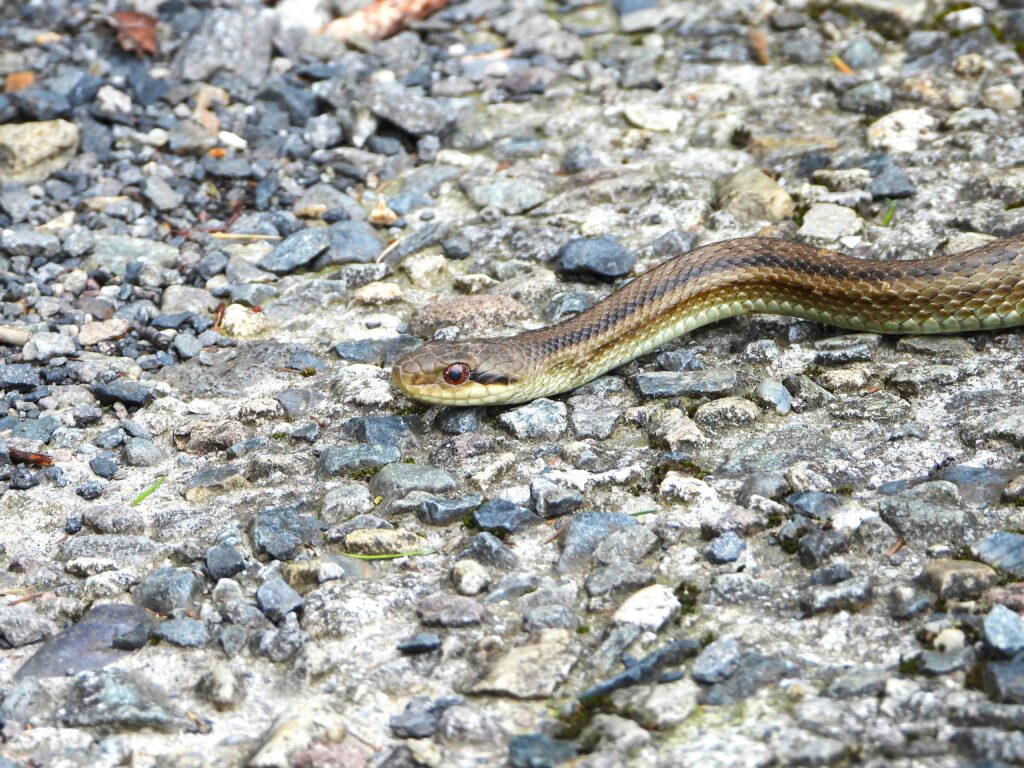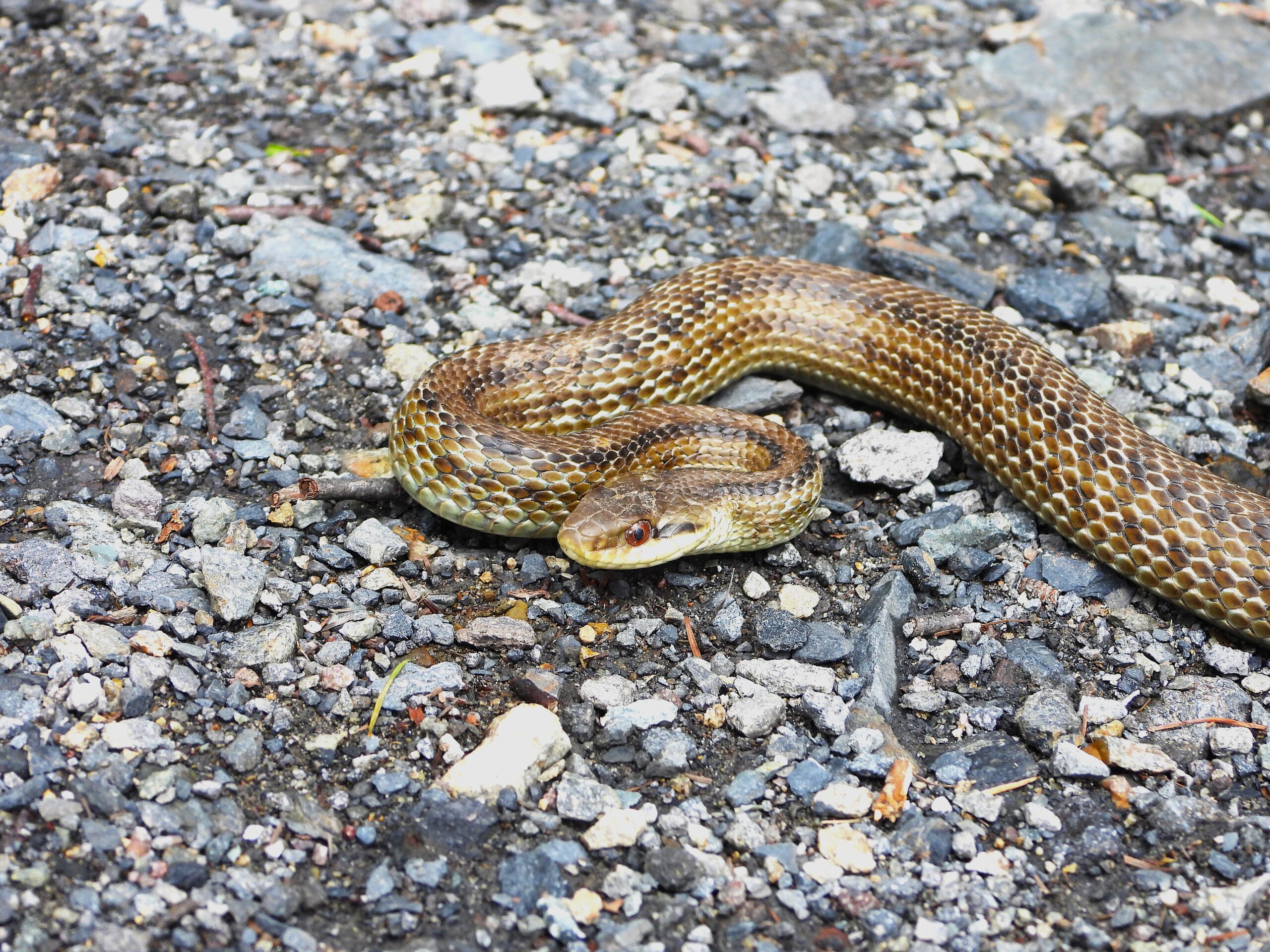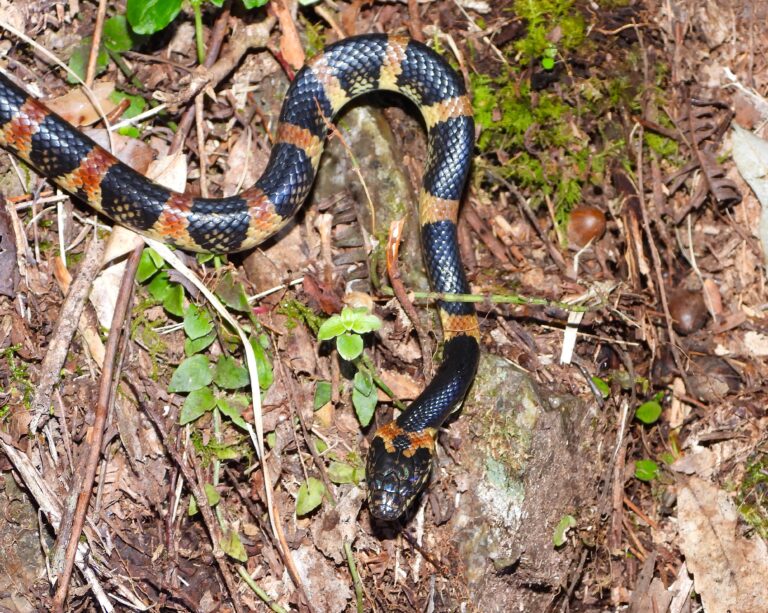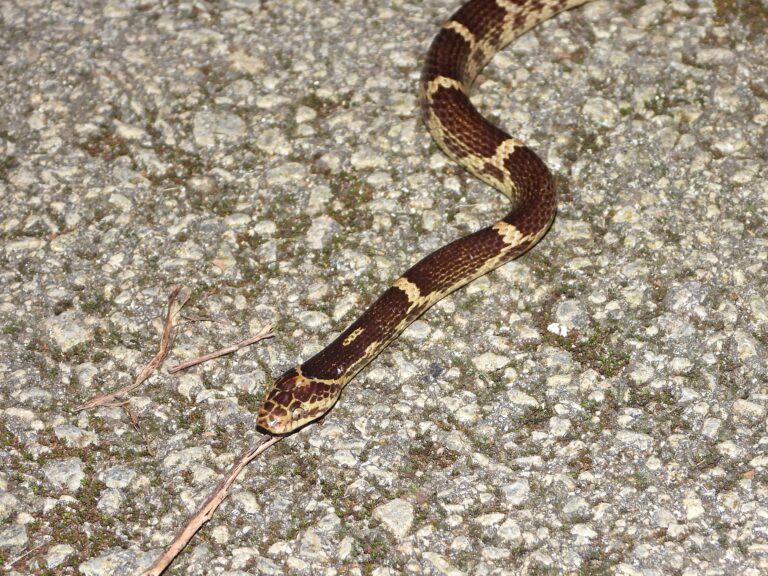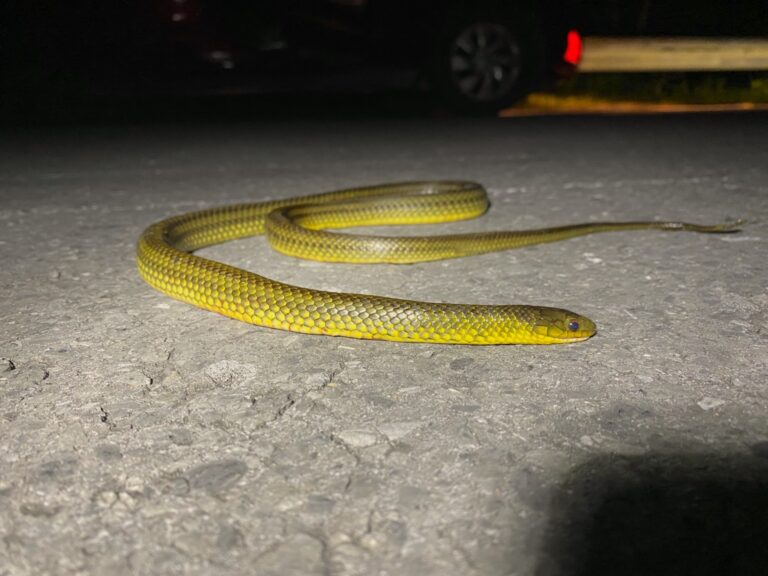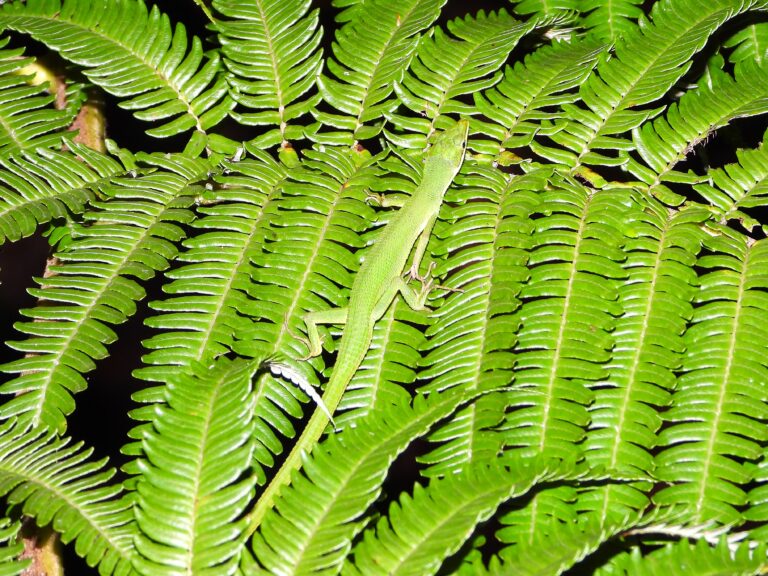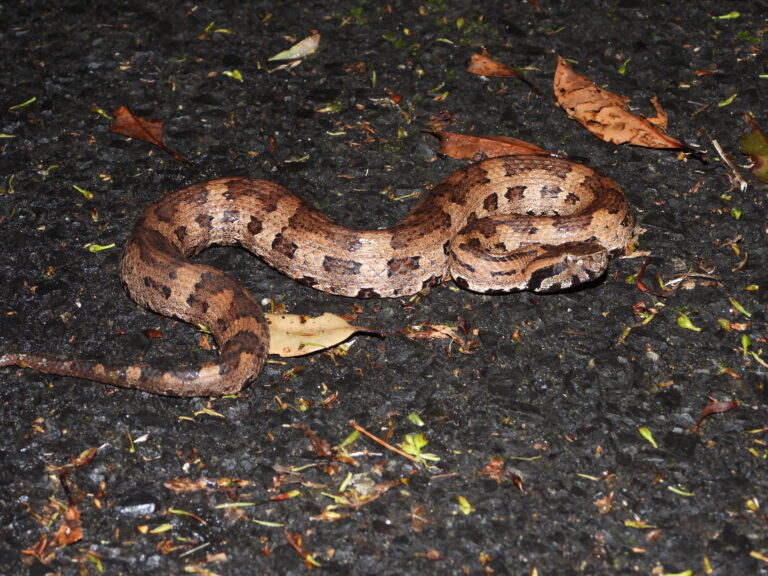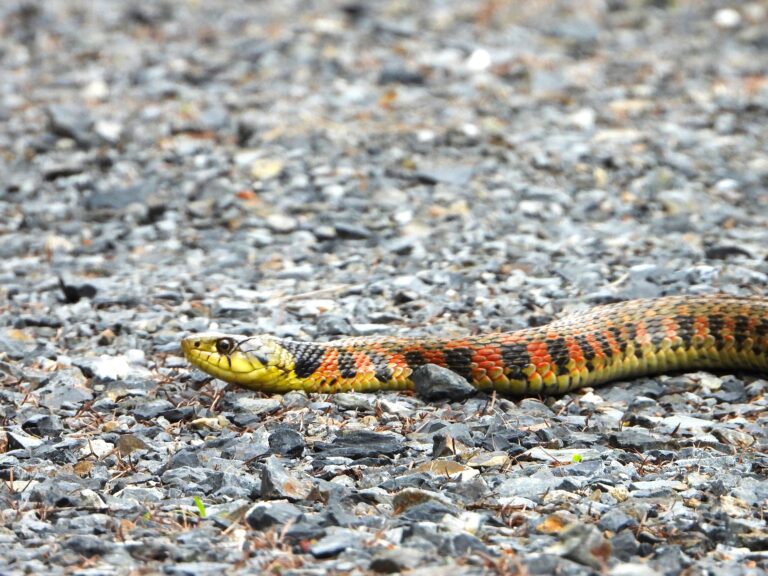Japanese Striped Snake (Elaphe quadrivirgata) – Wildlife of Japan
Introduction
The Japanese striped snake, also called the Japanese four-lined ratsnake (Elaphe quadrivirgata), is a non-venomous colubrid widely seen in open countryside across Japan’s main islands. Diurnal and often active around rice fields, levees, and grassy riverbanks, it plays an important role as a predator of frogs and small vertebrates.
Appearance
A slender snake typically 80–130 cm in length. The hallmark is four dark longitudinal stripes running the length of a yellowish to tan body; individuals vary from pale brown to olive, and melanistic (all-black) morphs occur locally. Juveniles often show more strongly contrasting stripes. The head is narrow with round pupils, and many individuals display distinctly reddish eyes—an important field mark.
Similar species (quick ID tips):
- Japanese rat snake (Aodaisho): usually larger and often greenish/olive with irregular crossbars rather than clean longitudinal stripes. Key ID differences: the striped snake commonly shows a reddish iris and four clean longitudinal stripes; Aodaisho tends to have a yellowish-green iris and lacks four crisp stripes.
Habitat
Common in agricultural landscapes: rice paddies and irrigation ditches, grassy riverbanks, forest edges, fallow fields, and rural settlements. Most records are from Honshu, Shikoku, and Kyushu (including nearby small islands). It is often associated with wetlands and ditches where frogs are abundant.
Behavior
Primarily diurnal from spring through autumn. Frequently basks on sun-warmed roadsides and levees, and can swim across ditches. When threatened it may flatten the body, vibrate its tail in leaf litter, hiss, and strike, but it is non-venomous. Overwinters underground or in crevices.
Observation tips:
- Watch warm, sunny levees around rice paddies from late morning to afternoon, especially after rain when frogs are active.
- Scan ditch edges and grassy margins; individuals may flee quickly into cover.
- In good light, the reddish iris can help confirm ID versus Aodaisho.
- For safety, never attempt to catch or closely approach an unidentified snake.
Diet
Mainly frogs and tadpoles, but also lizards (skinks), small rodents, and occasionally small birds, eggs, or fish in shallow ditches.
Reproduction
Mating typically occurs in spring (around April–May). Females lay a clutch of roughly 6–15 eggs in early summer (often in soil cavities, compost piles, or under boards). Eggs hatch in late summer.
Conservation
Widespread and generally common, but local declines are reported where traditional paddy fields disappear, concrete channelization reduces frog habitat, and road mortality is high. Many individuals are killed due to misunderstanding—public education and habitat retention benefit this species.
Author’s Impression
In the countryside, I often spot this snake basking on levees near rice fields in spring. When I get too close, it slips into the grass with a smooth, fluid motion. The crisp stripes in good light are striking—please enjoy it from a respectful distance and avoid stressing the animal. Compared to the Japanese rat snake (Aodaisho), it seems to have a more aggressive temperament; many individuals quickly adopt a striking posture and make biting motions when approached.
